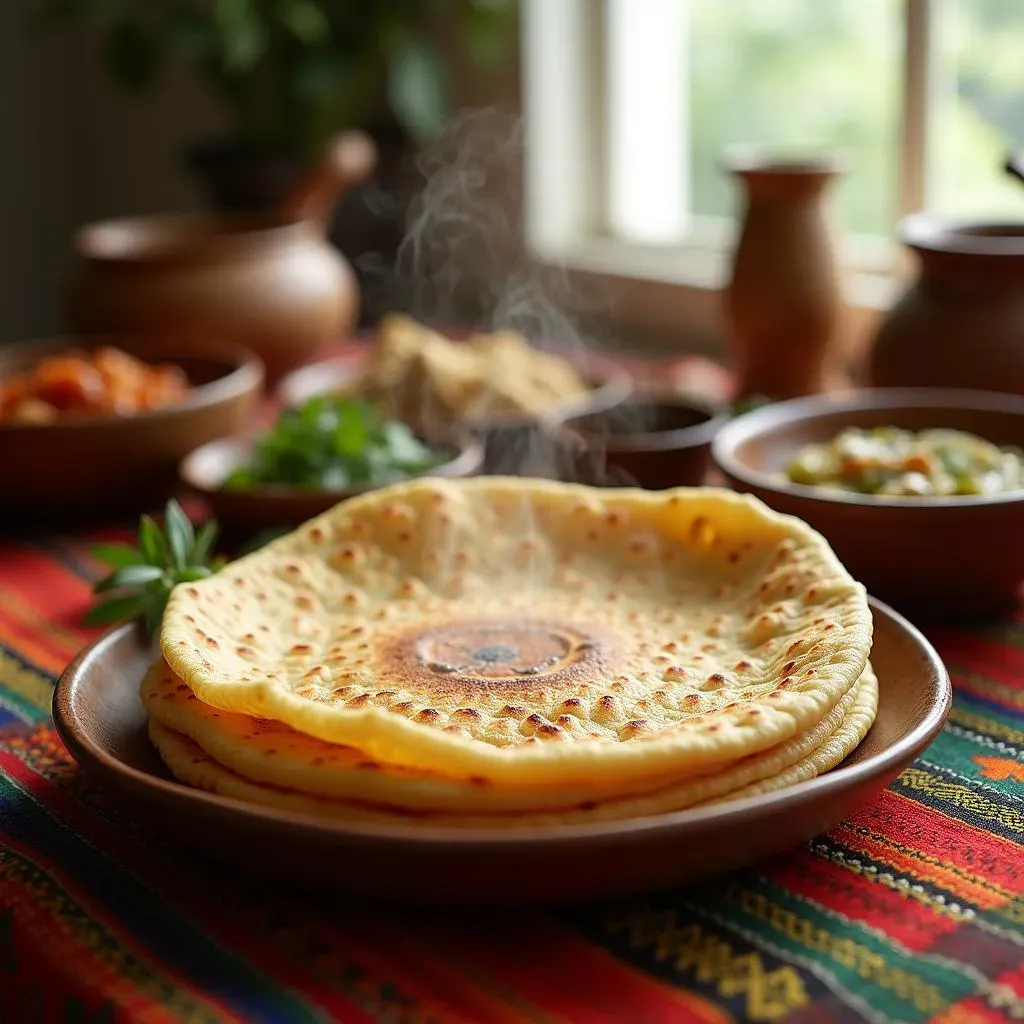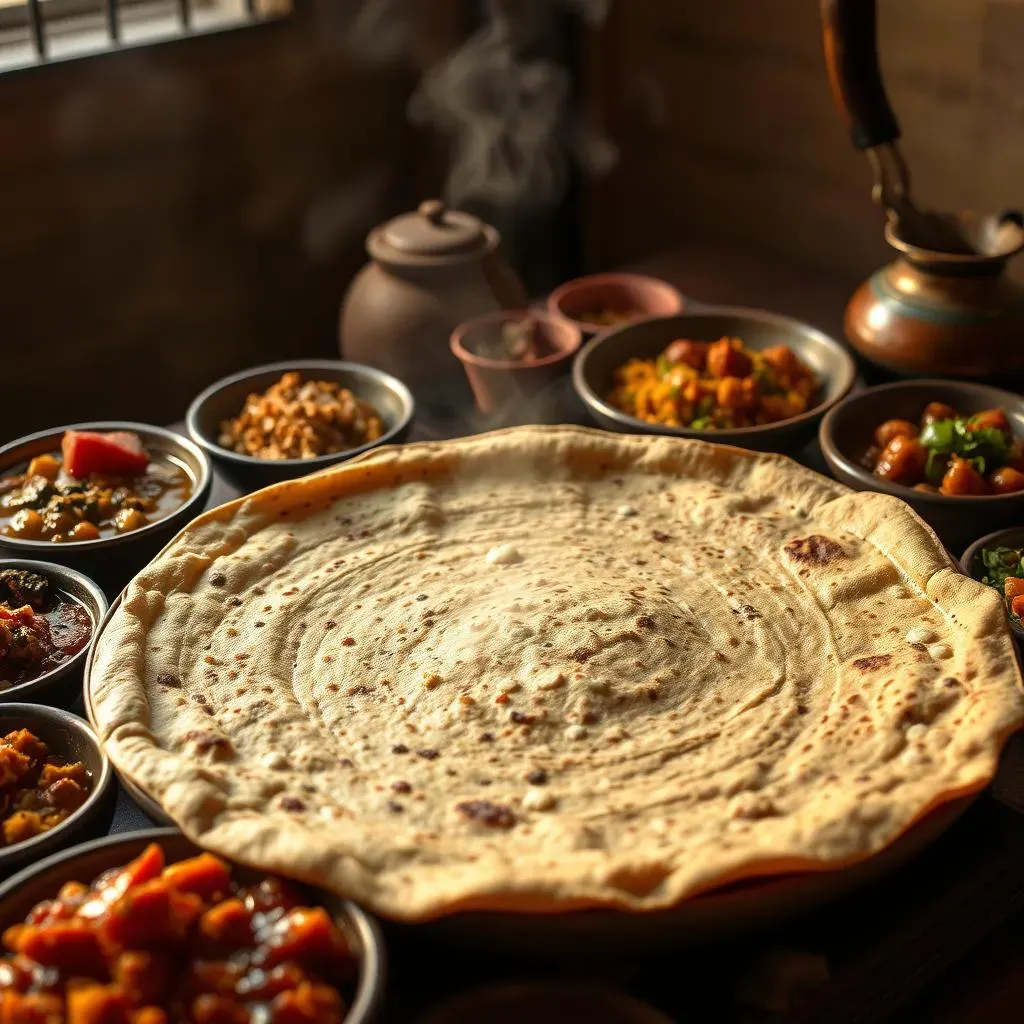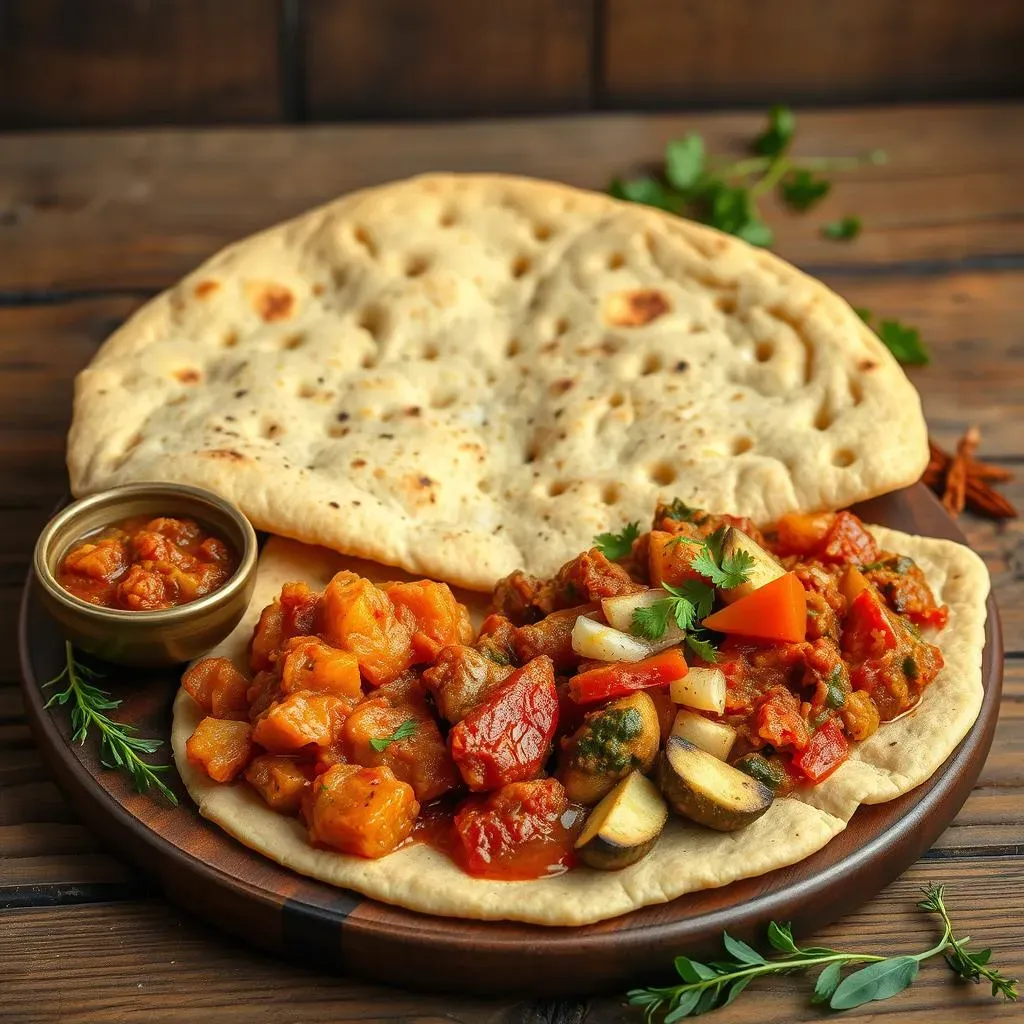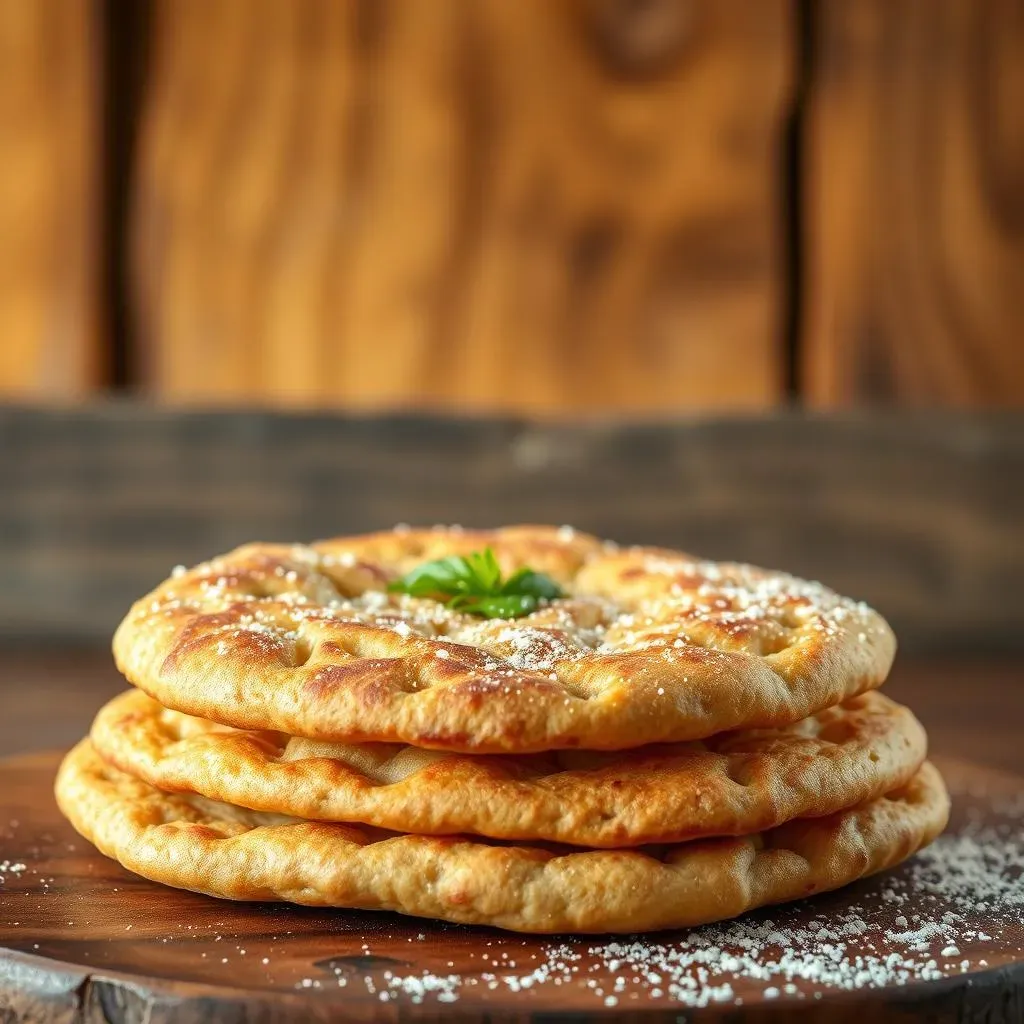Table of Contents
Ever wondered about that spongy, tangy flatbread that's the heart of Ethiopian cuisine? That's injera, and it's more than just bread; it's a culinary experience. This guide isn't just about giving you anethiopian injera recipe; it’s about unlocking the secrets to making it yourself, right in your kitchen. We'll start by exploring what makes injera so unique, and then we'll jump into the traditional method using teff flour. Don't have teff? No problem! I'll show you a quick and easy version that's just as tasty. Plus, I'll share my tips for avoiding common pitfalls like sticking and getting the perfect texture. Whether you're a seasoned cook or just starting, this article will give you the confidence to create your own delicious injera. So, grab your apron, and let’s get started on this culinary adventure together!
What Exactly Is Injera?

What Exactly Is Injera?
The Spongy Staple
Okay, so you're curious about injera, huh? It's not just any flatbread; it's the cornerstone of Ethiopian and Eritrean cuisine. Imagine a giant, slightly tangy pancake, but with a unique spongy texture that's perfect for soaking up all those flavorful stews and sauces. It’s made from a fermented batter, which gives it that distinctive sour flavor. Think of it like sourdough, but in flatbread form.
Injera isn't just food; it's also a utensil. You use it to scoop up bites of wat (stew), lentils, or veggies. No forks or spoons needed. It’s a fantastic, communal way to eat, everyone sharing from the same platter, which is really cool.
A Cultural Cornerstone
This bread is a big deal in Ethiopia. It’s part of almost every meal, from breakfast to dinner. It’s not something they just eat, it’s part of their culture, their history and their daily life. It’s also a symbol of hospitality and togetherness. If you’re ever invited to an Ethiopian home, you'll see that sharing injera is a central part of the experience.
Feature | Description |
|---|---|
Texture | Spongy and slightly porous |
Flavor | Tangy and slightly sour |
Usage | Both a food and an eating utensil |
Cultural Significance | Central to Ethiopian and Eritrean meals and social gatherings |
More Than Just Bread
So, why is injera so special? It’s not just the taste or texture; it's the way it brings people together. It's a simple food that’s rich with tradition. It’s a reminder that sometimes the most humble things are the most meaningful. And honestly, it's delicious. Once you’ve tried it, you’ll understand why it’s such a beloved staple in Ethiopian homes.
Plus, it's naturally gluten-free if made with 100% teff flour, which is pretty awesome for those with dietary restrictions. So, it's tasty, cultural, and inclusive. What's not to love?
Traditional Ethiopian Injera Recipe: The Real Deal

Traditional Ethiopian Injera Recipe: The Real Deal
The Magic of Teff
Alright, so you're ready to try the real deal, huh? The traditionalethiopian injera recipeuses teff flour, and that's where the magic starts. Teff is a tiny grain, packed with nutrients and responsible for injera's unique flavor and texture. It’s not like your regular wheat flour; it’s got this earthy, slightly nutty taste that ferments into that signature tang. It’s the key to getting that authentic injera experience, and if you can get your hands on some, I highly recommend it.
Finding teff might be a bit of a treasure hunt, depending on where you live. Check out your local health food stores or international markets. You can find it in different colors, like ivory or dark brown, which will affect the color of your injera, but the taste is pretty much the same. It’s worth the effort, trust me.
The Fermentation Process
Now, here’s where patience comes in. The traditional method involves fermenting the teff flour and water mixture for a couple of days. This isn’t like baking a cake; it’s more like brewing a very simple beer. The fermentation process is what gives injera that sour, tangy taste and its spongy texture. You mix the teff flour with water, let it sit, and the wild yeasts go to work. It’s pretty cool when you think about it.
The mixture, or "leet" as it's sometimes called, will start to bubble and smell slightly sour. That's a good sign, it means your batter is getting ready. The exact time it takes to ferment depends on your kitchen's temperature. Warmer places will ferment faster. It's kind of like watching a science experiment unfold in your kitchen, and the result is delicious flatbread.
Step | Description |
|---|---|
1 | Mix teff flour with water. |
2 | Let it sit at room temperature for 2-3 days. |
3 | Look for bubbles and a sour smell. |
4 | Your batter is ready to cook! |
Cooking the Injera
Okay, so your batter is bubbly and tangy, now it's time to cook. You'll need a large, flat non-stick pan or griddle. Heat it up over medium heat, and then pour a thin layer of the batter onto the hot surface, working in a circular motion from the outside in. It’s a bit like making a crepe, but with a slightly thicker batter.
You'll see little bubbles forming on the surface. That's normal, it’s how the injera gets that signature spongy texture. Cook it until the top is set and the bottom is lightly browned. You don't need to flip it. Slide it out, let it cool, and you're done. It’s a pretty simple process once you get the hang of it. The first one might be a little wonky, but don’t worry, it gets easier with practice. And the result? An authentic injera, ready to scoop up all your favorite Ethiopian dishes.
Quick & Easy Injera Recipe (No Teff Required!)

Quick & Easy Injera Recipe (No Teff Required!)
When You Need Injera, Like, Now
Okay, so maybe you're craving Ethiopian food, but you don't have teff flour, or you just don't want to wait days for fermentation. I get it! That's where thisquick & easy injera recipe (no teff required!)comes in. It's not the traditional method, but it's a fantastic workaround that still delivers that spongy texture and tangy flavor, just a bit milder. Think of it as the weeknight version of injera, perfect for when you need your fix without all the fuss. It’s all about getting that injera goodness without the long wait. You can still enjoy all your favorite Ethiopian stews and sides, and no one will know you took a shortcut!
This recipe uses a mix of regular all-purpose flour (or a gluten-free blend if you prefer) and a bit of baking powder for that lift. The tang? We're going to cheat a little by using some vinegar or lemon juice. It’s not the same as fermentation, but it gets the job done, adding that signature sour note. It's like a little kitchen magic trick. The batter comes together quickly, and it's ready to cook in no time. So, if you're short on time or teff, this recipe is your new best friend.
Ingredient | Purpose |
|---|---|
All-Purpose Flour | Provides structure |
Baking Powder | Adds lift and creates a spongy texture |
Vinegar or Lemon Juice | Adds a tangy flavor |
Troubleshooting Your Ethiopian Injera: Sticking, Texture, and More

Troubleshooting Your Ethiopian Injera: Sticking, Texture, and More
Why Is My Injera Sticking?
Okay, so you've got your batter ready, you're excited to cook, and then *bam*—your injera is stuck to the pan like it's glued there. Frustrating, right? This is a common problem, but don't worry, it's totally fixable. The main culprit is usually the pan itself. Make sure you're using a good non-stick pan or a well-seasoned cast iron skillet. If your pan is old or damaged, the batter will cling to it. Also, make sure the pan is properly heated before you add the batter. A cold pan is a recipe for sticking. Think of it like trying to fry an egg in a lukewarm pan—it's just not going to work. Another thing: a bit of oil on the pan can help, but don’t overdo it. Just a light spray or a quick wipe is all you need.
Sometimes the batter consistency can be the issue. If it’s too thick, it might stick more easily. On the flip side, if it's too thin, it might not cook properly. It's all about finding that sweet spot. You might need to experiment a little to get it just right. I usually start with a batter that’s similar to a thin pancake batter. And remember, patience is key. Don't try to peel it off too soon. Give it time to set before you try to slide it out of the pan. It's like waiting for a plant to grow; you can't rush it.
Problem | Solution |
|---|---|
Injera sticks to the pan | Use a non-stick or well-seasoned pan, ensure it's hot, use minimal oil |
Batter too thick | Thin it out with a bit of water, one tablespoon at a time. |
Batter too thin | Add a bit of teff or all-purpose flour, one teaspoon at a time. |
Impatiently peeling it off | Give it time to set before trying to slide out of the pan |
Nailing the Texture
Okay, so you've managed to get your injera off the pan without it tearing into a million pieces, congratulations! But what if the texture isn't quite right? Maybe it’s too dense, too rubbery, or not spongy enough? Texture is a big deal with injera. The goal is to get those little air pockets that make it light and absorbent. If it’s too dense, that means your batter might be too thick. Try thinning it out with a little water, one tablespoon at a time, until you get a thinner consistency. Think of it like adjusting the paint consistency for a painting—you want it to flow, not clump.
Also, make sure your baking powder is fresh if you’re using the quick recipe. Old baking powder loses its oomph, and that can affect the texture. If you’re using teff, make sure it's not too old or stale. Fresh teff tends to give a better result. It’s like using fresh herbs; they just taste better. And don’t overmix your batter. Overmixing can develop the gluten, making the injera tough. Just mix it enough to combine everything. Think of it like gently folding in meringue; you don't want to deflate it.
Sometimes, the fermentation process is the key. If you are using teff, a good fermentation is key to the texture. It's like letting dough rise for bread; it needs time to develop those air pockets. But also, don't let it ferment for too long, it can become too sour and not have the right texture. It's a balancing act, but with a little practice, you'll get the hang of it.
The Flavor Factor
Alright, so your injera is looking good, it's not sticking, the texture is on point, but what about the flavor? Injera should have a slightly sour, tangy taste. If it's too bland, it could be that your batter didn't ferment enough or you didn’t add enough vinegar or lemon juice in the quick recipe. If you're using the traditional teff method, give it more time to ferment. The longer it sits, the tangier it will get. It’s like aging cheese or wine; time is flavor. But be careful, too much fermentation can make it too sour, so it's a balancing game.
If you’re using the quick version, don’t be shy with the vinegar or lemon juice. Taste the batter before you cook it and add more if needed. You can also try adding a pinch of salt or a bit of sugar to balance the flavors. It’s like adding a pinch of salt to a chocolate cake; it enhances the flavor. It's all about experimenting to find your perfect flavor profile. And remember, practice makes perfect. The more injera you make, the better you’ll get at it. It's like learning to ride a bike; at first you wobble, but eventually, you're cruising down the street.
"The key to a great injera is not just the recipe, but the feeling you put into it." - A wise Ethiopian grandmother